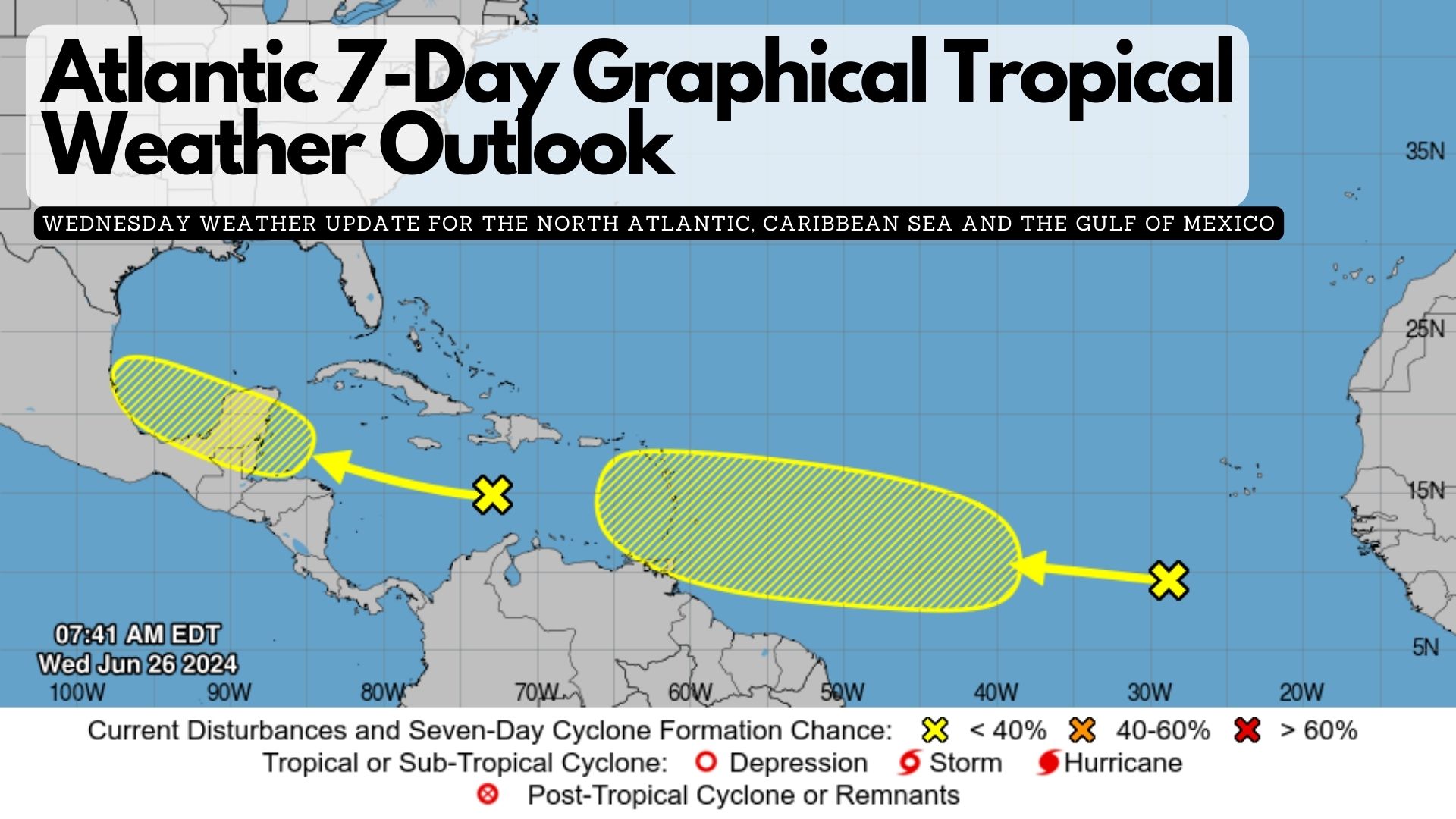As of 8:00 AM EDT on Wednesday, June 26, 2024, the National Hurricane Center in Miami, Florida, has identified two areas of interest in the Atlantic basin that could potentially develop into tropical systems over the coming days.
Western Caribbean/Southwestern Gulf of Mexico:
The first area of concern is a tropical wave currently situated over the central Caribbean Sea. This system is moving rapidly westward at approximately 25 mph, accompanied by disorganised shower activity. There is a possibility that environmental factors may improve by the weekend.
* Formation chance through 48 hours…low…10 percent.
* Formation chance through 7 days…low…20 percent.
Eastern Tropical Atlantic:
The second area being monitored is a tropical wave located several hundred miles southwest of the Cabo Verde Islands. This disturbance is generating disorganised showers and thunderstorms as it moves westward across the central and western tropical Atlantic at a speed of 15 to 20 mph.
* Formation chance through 48 hours…low…near 0 percent.
* Formation chance through 7 days…low…30 percent.
